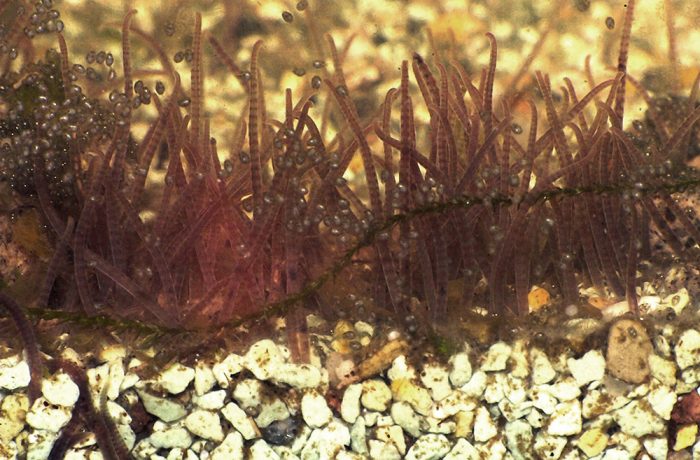As a part of their work on Trout Whirling Disease, Beauchamp, et al. determined that there were four sub-species or lineages of Tubifex tubifex, the alternate host for Myxobolus cerebralis, and that the lineages had different sensitivity to infection by M.c. (Beauchamp, et al., 2002). Since this differential susceptibility might be expected to have an effect on the etiology of the disease, depending on the lineages of tubifex present in a location, they developed PCR assays based on mitochondrial 16S sequence to distinguish the four lineages (ibid.). While the assays worked well, they could only be used on single worm samples, since they relied on different amplicon lengths to determine the lineage. At Pisces we took the four assays and reformulated them as a single, “quadruplex” qPCR assay using a single pair of primers and four lineage-specific fluorescent probes, each with a different color dye (Nehring, et al., 2013). This permitted testing multi-worm samples and gave the percentage of each of the four lineages in a sample, allowing studies of the population dynamics of tubifex worms in a location before, during and after infection with M. cerebralis. (As one might expect, in locations with a mix of lineages in the absence of M.c., there was a decrease of sensitive lineages and an increase in resistant lineages after M.c. infection (ibid.).
References:
Beauchamp, K.A., M. Gay, G.O. Kelley, M. El-Matbouli, R.D. Kathman, R.B. Nehring, and R.P. Hedrick. 2002. Prevalence and susceptibility of infection to Myxobolus cerebralis, and genetic differences among populations of Tubifex tubifex. Diseases of Aquatic Organisms 51(2): 113-21. DOI: 10.3354/dao051113
Nehring, R.B., B. Hancock, M. Cantanese, M.E. Stinson, D. Winkleman, J. Wood, and J. Epp. 2013. Reduced Myxobolus cerebralis actinospore production in a Colorado reservoir may be linked to changes in Tubifex tubifex population structure. Aquatic Animal Health 25(3): 205-220. DOI: 10.1080/08997659.2013.788581

